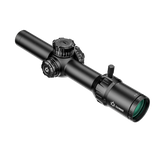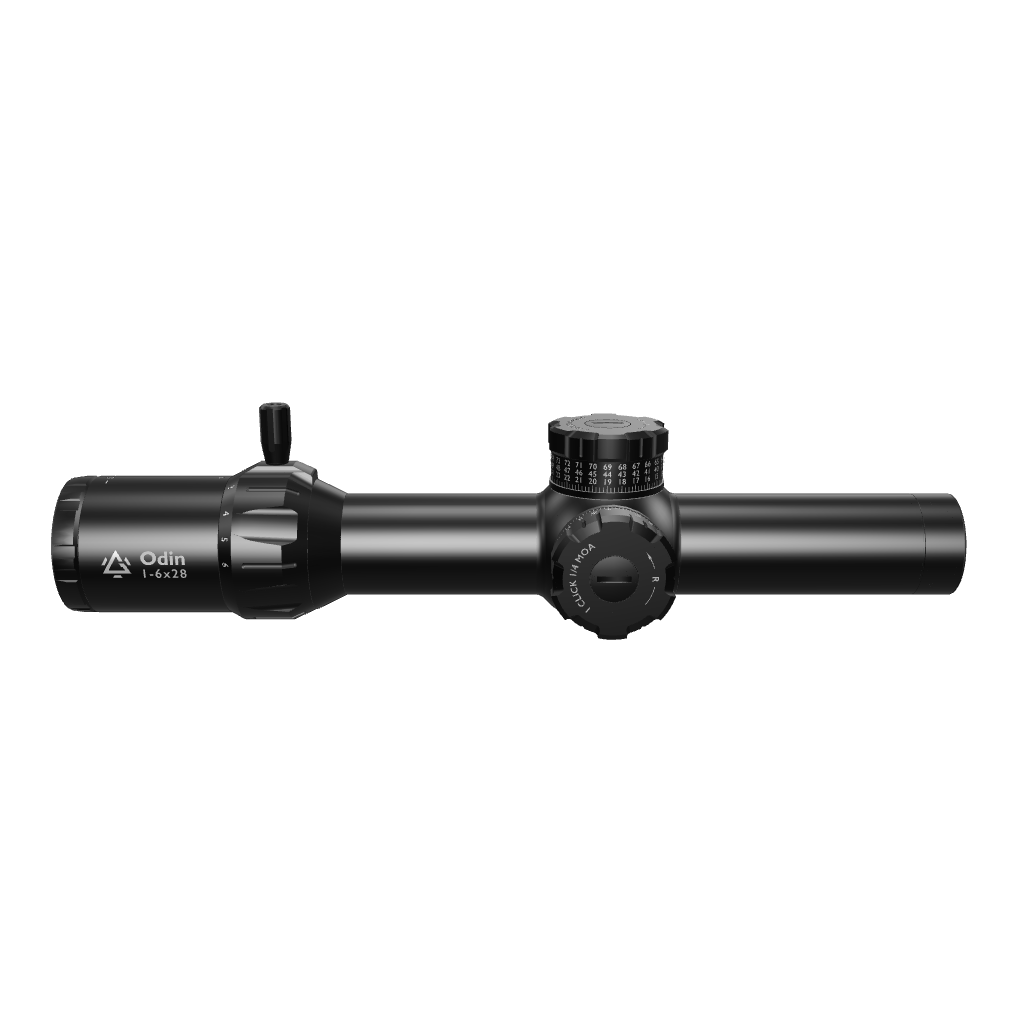30mm vs 35mm: Why Tube Diameter Matters
The idea that a larger scope means more light transmission has been proven to be one of the most misleading scope myths out there. What actually provides better light transmission is high-quality glass, not a larger tube diameter.
So, what does a larger tube do?
If it does not mean better light transmission, then what does it matter whether you have a 25 mm tube or a 35 mm tube? What would a 34 mm tube give you that a 24 mm cannot?

Why Is Tube Diameter Important?
1. A Larger Tube Diameter Gives You More Adjustment Range
One of the biggest functional differences between a small tube and a larger tube is internal travel.
A larger tube diameter (30mm or 34mm) allows for more windage and elevation adjustment, which matters if you’re shooting long-range or dialing in frequently. In fact, the longer the range you are shooting at, the bigger the tube you need.
A perfect example is a competitor shooting at an effective distance of over 1,000 yards vs. a hunter taking 100-200-yard shots. A 24 mm optic would do the job for the hunter, but the PRS shooter needs more precise adjustments for accuracy at that distance.
2. Tube Diameter Affects The Durability and Strength of Your Optic
Bigger tubes generally mean thicker walls and stronger housings. That’s why heavy-duty tactical and long-range optics often come in 30mm or larger. A 34mm tube, for example, will shrug off abuse that could dent or shift a lighter 1-inch optic.
This matters a lot if you plan to shoot in rugged conditions or store your optic.
3. A Larger Tube Means Better Light Management
Again, the idea that bigger tubes are automatically brighter is not true. However, what a larger tube does provide is space for larger internal lenses: a larger 34mm tube will have space for bigger and more sophisticated lenses, which can help maintain image quality at higher magnifications and in low-light situations.
4. A Large Tube Means More Weight and Balance
A 1-inch scope might shave several ounces off compared to a 34mm scope, and that is generally a good thing.
But the advantage of having a lightweight optic is really only noticeable on a lightweight mountain rifle, where every ounce matters. If you are working with a heavy precision rig, stability is what you are looking for. Here, a heavier 34 mm diameter becomes an advantage.

Common Tube Diameters and Their Uses
1-Inch (25.4mm)
- Pros: It is Lightweight, has a slim profile, is widely available, and is usually cheaper.
- Cons: There is less internal travel, so it is not ideal for precision or long-range.
Consider a 25.4 mm optic if you are a hunter and/or recreational shooter who prioritizes weight and simplicity over extreme adjustment range.
30mm Tube Diameter: Pros and Cons
- Pros: When it comes to tube diameters, 30 mm is the “sweet spot” for most shooters. It is more rugged than a 1-inch, but with noticeably more adjustment range.
- Cons: Slightly heavier and pricier than 1-inch, but still manageable.
A 30 mm optic is best for hunters, tactical shooters, and competition shooters who want versatility without excess weight. Consider a 3-gun competitor running a 1–6x LPVO: they get just the right balance of durability, field of view, and adjustment travel for that range.
34mm Tube Diameter: Pros and Cons
- Pros: A 34mm diameter provides extreme adjustment travel, comes with very strong housings, and has room for advanced optical systems.
- Cons: They are heavier, more expensive, and require larger rings.
Precision marksmen, military/tactical operators, and competitors pushing optics to their limits. Consider a 34 mm diameter if you are a PRS shooter engaging steel targets past 1,000 yards. The extra elevation range will come in really handy.
35mm and Larger (Specialty Tubes)
- Pros: Even more adjustment range and optical engineering potential.
- Cons: Heavy, expensive, and specialized. For most shooters, a 35 mm would be a bit of overkill.
These are mainly for elite shooters who demand every possible edge in distance shooting. Found on high-end scopes like Schmidt and Bender or March, tailored for extreme long-range professionals.

25.5 mm vs 30mm vs. 34mm Tubes
| Tube Diameter | Strengths | Limitations | Best For | Example Use Case |
| 1-Inch (25.4mm) | Lightweight, affordable, common mounts | Limited adjustment, less rugged | Hunters, recreational shooters | Deer hunting with a light bolt-action rifle |
| 30mm | Versatile, durable, and a wider range | Slightly heavier, pricier than 1-inch | All-around shooters, tactical, competition | 3-gun competitor with a 1–6x LPVO |
| 34mm | Extreme adjustment, very strong housing | Heavy, expensive, requires big mounts | Long-range precision, tactical, PRS | PRS shooter dialing past 1,000 yards |
| 35mm+ | Maximum adjustment, elite optics | Overkill for most, very costly | Extreme long-range professionals | ELR match shooting at 1,500+ yards |
Choosing Based on Shooting Needs
Here’s how tube diameter usually lines up with different shooter profiles:
- Hunters (short/medium range): 1-inch or 30mm. Go 30mm if you want more low-light flexibility.
- Recreational Shooters: 1-inch keeps it light, simple, and affordable.
- Long-Range Precision: 30mm or 34mm. The extra adjustment travel makes a real difference past a few hundred yards.
- Tactical/Competition: 30mm suits most, but 34mm shines in rugged, high-stakes environments.

A Note on LPVOs
With LPVOs (Low Power Variable Optics), the choice is simpler:
- For most LPVOs, 30mm is the standard tube diameter. It provides the best balance of weight, field of view, and ruggedness.
- 34mm tube diameters are common in premium tactical LPVOs where extra durability and adjustment travel matter.
|
LPVO Model |
Tube Diameter |
|
34mm |
|
|
30mm |
|
|
34mm |
For most LPVO buyers, 30mm is the default choice, but 34mm may be better if you are a high-end competitor or a tactical shooter.
Final Thoughts
Tube diameter isn’t just a number-it’s a tradeoff between weight, durability, and adjustment range. 1-inch tubes keep things light and simple. 30mm tubes are the most versatile, striking a balance for hunters, competitors, and tactical shooters alike.
34mm and larger tubes open up serious long-range and professional capabilities, but come at the cost of weight and price. The key is not chasing the biggest tube size but choosing the one that fits your rifle, your shooting style, and your goals.
For more valuable quick tips, explore these 7 common myths about optics.







